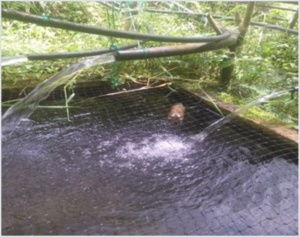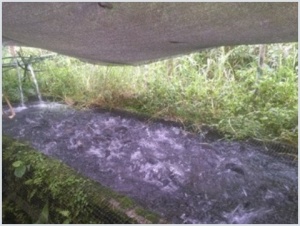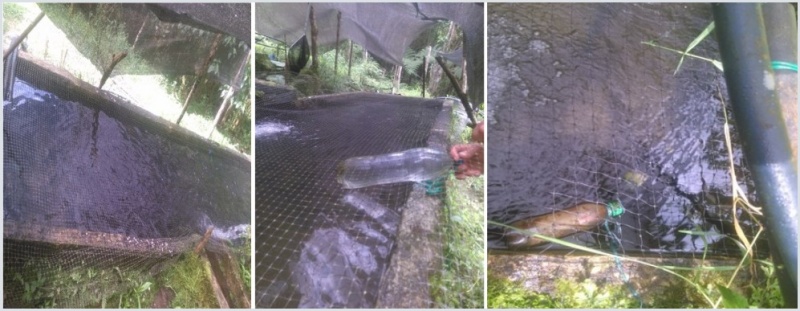Plasma in pisciculture
This article is part of the KF Plasma Times April 2019
During the past 3 years we have been studying, working and learning every day. We can bring forward the following assessments.
It all began through one friend which has spoken to me about the Keshe Foundation and the Plasma Technology, showing me videos and reactors for the GANS capturing which he was having in his own home. While receiving this information I have started to invest in zinc and copper plates, plastic recipients, and everything necessary to make my own GANS capturing kit.
In more or less 20 days I have started to see the CO2, ZnO and CuO GANS in my first 3 reactors with which I started the experiments on the GANS capturing.
The method that I used to wash the GANSes was by extracting the GANS using a syringe and then putting it in another recipient to wash and remove the salt excess. By this method, we have the GANSes ready to start utilizing them to produce the plasma water (liquid plasma). The Plasma Water is used as sprays, bracelets, anklets, ingesting and other applications that occurred to me. It was then when I had a very interesting experience in the area of pisciculture.
One very close friend has a fish hatchery where he is growing trout and other fish very similar to the salmon which it is raised in waters at temperatures below 21 degrees Celsius.
One day he put in one of his ponds 1000 tiny trout, of approximately 4 cm each. A week after the fish was placed in this pond he washed the largest pond which he had in the upper region from where the other aquariums (ponds) are. It is necessary to clarify that the ponds are on a mountain and are natural ponds, in the rural area of the city. Taking advantage of the gravity, the water formed a cascade which fills other ponds in the bottom part of the land.
Around 15 days after the main pond from the upper side was washed, it caused an influx of small dirt particles and mud that passed through the main filter and reached the bottom ponds and subsequently the trout.
What he did not know what that the pond with the 1000 trout which were the smallest from all the other trout got affected by a known parasite called White Spot (Ichthyophthirius multifiliis). This condition caused by the known protozoa is one of the most common conditions from the aquariums.
The microorganisms which trigger the illness are so widespread that all the fishes in the aquarium (pond) have entered in contact with them at least once in their lives. However, the only fish that got sick in contact with the parasite are those which are stressed by the quality of the water in conjunction with the poor diet, affecting the smallest fishes most of all.
The dirt particles reached the pond where the small trout was, altering the water quality, therefore causing them stress, to begin with, and con- sequently causing the fish not to feed themselves well enough. The most characteristic visual symptoms are the white spots on the body of the trout, especially on their gills. In addition, the infected fish show nervous behavior and swim much faster trying to remove the discomfort from their skin. When the condition advances so far, the fish become more and more irritated and begin to rub against the objects, the walls, or the gravel of the aquarium to alleviate the itching. In the final stage, the condition can cause breathing difficulties, lack of appetite and even death in the fish population.
As a result of this contamination, in the course of 4 days, 50 to 65 trout died daily, accounting for approximately 240 fishes, until the processing with the plasma water started in the pond until trying the new alternative approach with the Keshe Plasma Science and Technology.
The processing method which was applied on the trout was by preparing 3 jars, each of them with the capacity of 2 liters and putting them in the pond. 2 of the jars were submerged at the bottom and the third floating at the surface. Each one of the 3 jars contained the plasma water of CO2 and ZnO in the ratio of 50-50%. Each day afterward it was noticed a decrease in the mortality rate of the fishes. From 50-65 fishes dying per day, the second day after plasma processing only 35 fishes died, the third and fourth day after plasma processing only 23 fishes died, the fifth day after plasma processing only 18 fishes died, the sixth and seventh day after plasma processing only 12 fishes died, the eight day after plasma processing only 8 fishes died. The ninth and tenth day after plasma processing only 5 fishes died. And it continued to decrease until they reached 0% fish mortality rate at approximately the twentieth day.
Today, 5 months after the appearance of the White Spot parasite, the surviving trout has already grown weighing approximately 1000 grams each. The fishes are much more peaceful, without any additional sign of pathological conditions and without dying.





